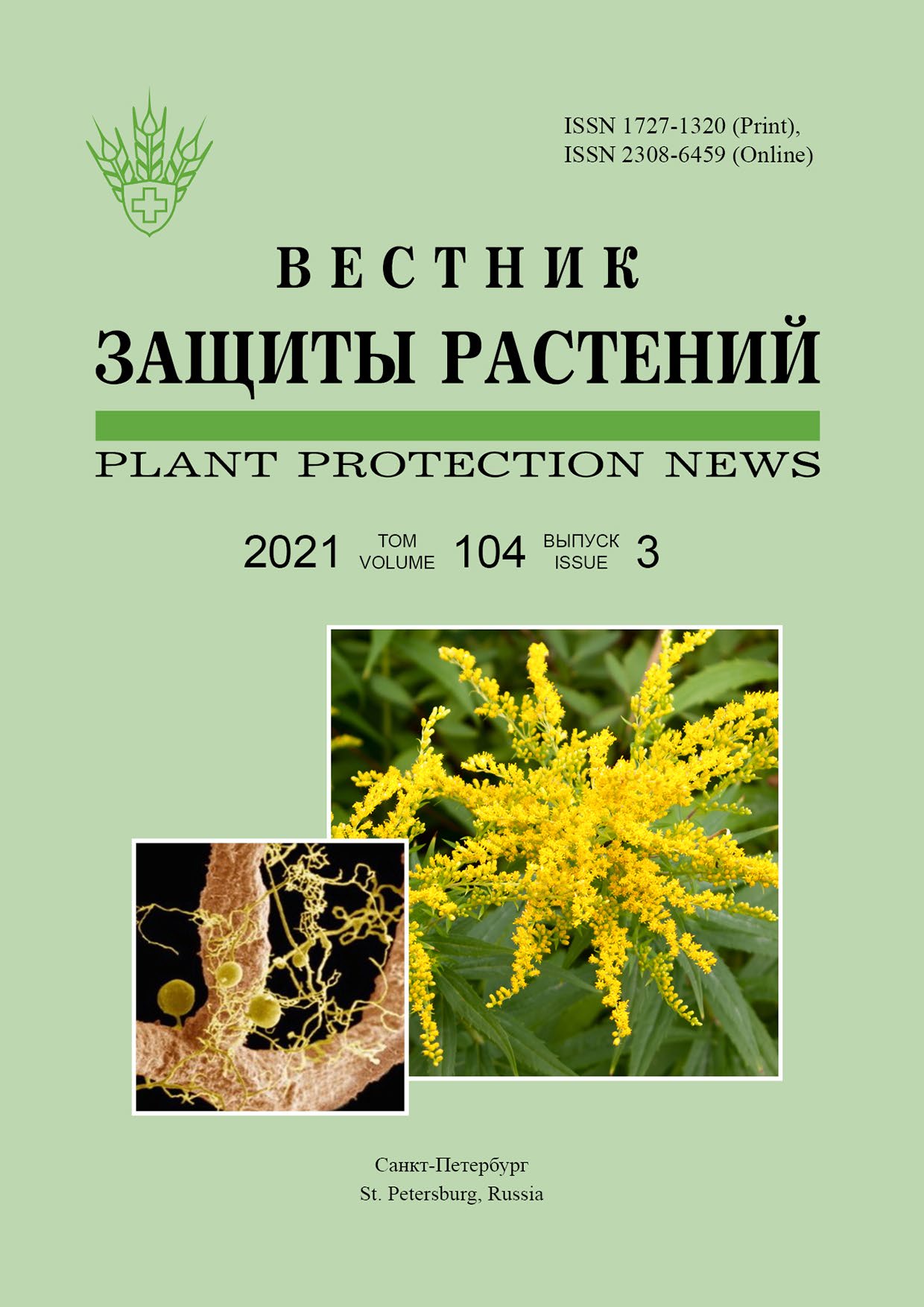Contamination of grain in West Siberia by Alternaria fungi and their mycotoxins
Keywords:
DNA, Alternaria, Infectoriae, real-time PCR, HPLC-MS/MS, mycotoxinsAbstract
The ubiquitous occurrence of Alternaria fungi belonging to sections Alternaria and Infectoriae was confirmed using real-time PCR in wheat, barley and oat grain grown in West Siberia in 2018‒2019. The DNA amount of Alternaria section Alternaria fungi varied from 53×10-4 to 21731×10-4 pg/ng and on average exceeded the DNA amount of Alternaria section Infectoriae fungi by 4.5‒14.6 times, depending on the crop and harvest year.The average DNA amount of Alternaria fungi belonging to both sections in the oat grain was lower than in wheat and barley grain. The grain samples from Altay region were the most infected with Alternaria fungi. The alternariol (AOH), alternariol monomethyl ether (AME), tentoxin (TEN), and tenuazonic acid (TeA) mycotoxins produced by Alternaria fungi were detected by HPLC-MS/MS in 23 %, 6 %, 85 %, and 83 % of analyzed grain samples, respectively. The majority (61 %) of the samples contained two Alternaria mycotoxins in the grain (mainly TEN and TeA), 19 % of the samples three mycotoxins, and only one sample all four together. In the most of samples the content of Alternaria mycotoxins did not exceed 100 μg/kg, and only TeA content was higher (from 113 to 14963 μg/kg) than others. The significant differences in grain crops by the Alternaria mycotoxins content were revealed: more amounts of AOH, AME, and less amount of TEN were found in oat grain then in barley grain. A high positive significant correlation between the DNA amount of Alternaria section Alternaria fungi and TeA was established that indicates the role of these fungi as the main producers of TeA in the grain.



